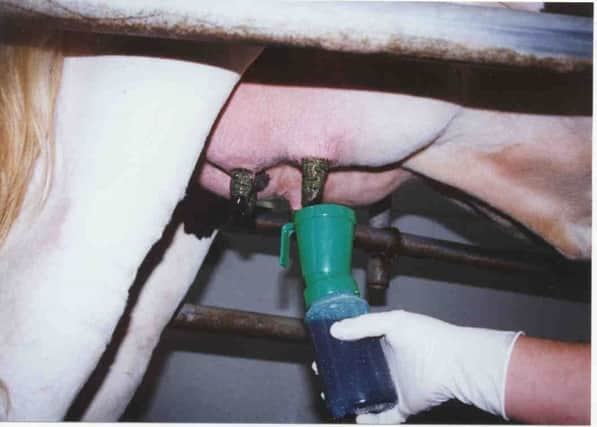Effect of udder health on fertility


Various studies have linked the effects of mastitis both before and after artificial insemination with impaired reproduction. Several studies have demonstrated considerable negative effects of clinical mastitis on days to 1st insemination (up to 22 days more) and days to conception (up to 44 days more).
One recent study conducted in two dairy herds in California in which approximately 9,000 lactations were evaluated found cows without mastitis became pregnant 25% faster than cows with mastitis. The median interval from calving to pregnancy (interval after calving at which 50% of cows are pregnant) for cows without mastitis was 128d, whereas cows that had mastitis had a median interval from calving to pregnancy of 154d.
Advertisement
Advertisement
Another study in New Zealand evaluated the reproductive performance of 2,004 lactating cows from 10 pasture-fed dairy herds. Cows that had received artificial insemination within 16 d after the initiation of the breeding season were examined for pregnancy status 29-45d after AI and at 6, 8, 10, 14, and 22 weeks of pregnancy.
In this study the risk for pregnancy loss was 1.57 times greater for cows that experienced mastitis at any time during the lactation compared with those that never experienced mastitis.
One factor when reviewing studies in mastitis is how they have been diagnosed and graded. Mastitis can be classified in severity as outlined below:
Subclinical: Classically identified as cows with no detectable changes in milk, but with a somatic cell count >200,000 cells/ml. These cows whilst appearing unaffected, may experience a reduction in yield potential and can act as a source of infection for other cows within the herd.
Advertisement
Advertisement
Mild: Abnormality of milk with little to no udder changes and no dullness or loss of appetite within the cow herself.
Moderate: Changes detectible in milk and udder
Severe: Marked changes in milk, udder and major systemic effects. These cows will have a high temperature, loss of appetite and be dehydrated. These cows need urgent veterinary attention.
So what might you be aiming for when considering udder health goals on your dairy? Generally quoted figures within the UK are:
Mastitis cases per 100 cows per year <30
% of herd affected per year (mastitis persistence) <20%
Mastitis re-occurrence rate <10%
Herd Average Somatic Cell Count <150,000 cells/ml
To achieve these goals it can be useful to set targets or Key Performance Indicators. For example in a high yielding dairy enterprise these might be:
Average flow rate: >3.0kg/min
% 2.0 minute milk 50%
Cows/stall/hour >6.0
Milk/stall/hour >75kg
Peak milk flow >4kg/min
Prep lag time >90secs
Teat stimulation time >12secs per cow
Many farms can benefit initially by reviewing:
Advertisement
Advertisement
1, Milking Routine – where possible ensure entire milking team is engaged in learning and development regarding udder health
2, Teat Preparation and Products – pre and post teat products have different kill times and actions.
3, Dynamic Test of the milking parlour i.e. tested when in operation
4, Mastitis identification and treatment regimes – e.g. there is some evidence that the addition of a non-steroidal anti-inflammatory to mastitis treatment regimes can reduce pregnancy loss.
Advertisement
Advertisement
In summary each farm will have it’s own specific risk factors for udder health. Working with your veterinary surgeon and udder health specialists will help you understand and mitigate against those risks and the pathogens specific to your farm. Results can be seen relatively quickly when you make changes to improve udder health, followed up by the later benefits to your cattle’s fertility.